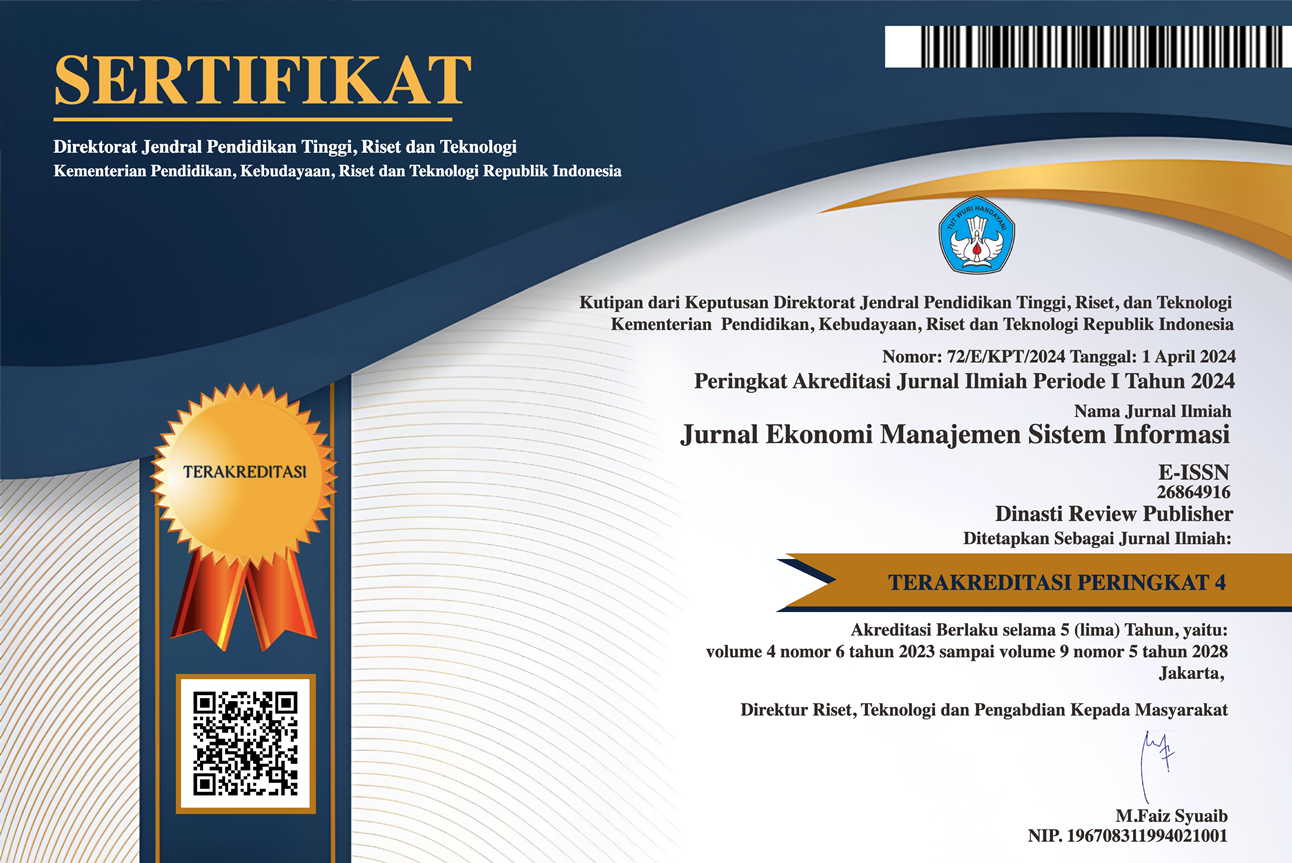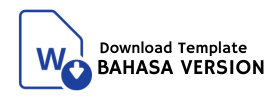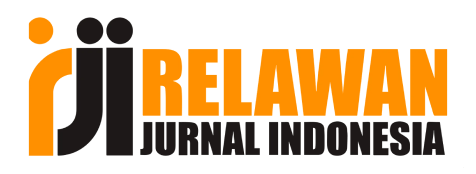Navigating the Cloud: Analysis of Product Deployment Timeline on Cloud Infrastructure for E-Commerce: A Case Study at Company X
DOI:
https://doi.org/10.38035/jemsi.v6i3.4246Keywords:
Deployment Cloud, Timeline Efficiency, E-Commerce, Automation, Thematic Analysis, Ost managementAbstract
This study seeks to analyze the factors affecting the efficiency of product launch timelines within the cloud infrastructure at Company X, which operates in the e-commerce sector. The primary issue identified is the prolonged product launch process, attributed to technical and operational challenges as well as inadequate team coordination. A review of the literature suggests that process automation through tools such as Terraform and Jenkins could enhance launch efficiency. This research utilizes a qualitative approach with thematic analysis to investigate various obstacles, including application compatibility issues, configuration errors, skills deficiencies within the team, and reliance on manual processes.
The findings indicate that automation has the potential to reduce launch times by up to 50%, thereby significantly enhancing overall work efficiency. Nevertheless, challenges such as insufficient team training in automation tools and weak interdepartmental coordination were also noted. Recommendations include the implementation of comprehensive automation strategies, the development of training programs to improve team competencies, and the adoption of more effective cost management practices. This study contributes empirical insights within the e-commerce context and presents practical solutions aimed at improving product launch efficiency in cloud infrastructure.
References
Armbrust et al., “A view of cloud computing,” Commun. ACM, vol. 53, no. 4, pp. 50–58, 2010, doi: 10.1145/1721654.1721672.
Budiono, S. K. Lau, and W. J. Tibben, “Cloud computing adoption for e-commerce in developing countries: Contributing factors and its implication for Indonesia,” Proc. 22nd Pacific Asia Conf. Inf. Syst. - Oppor. Challenges Digit. Soc. Are We Ready?, PACIS, 2021.
Budiono, S. K. Lau, and W. J. Tibben, “Cloud Computing and E-commerce Adoption in Indonesia: Mind the Gaps,” Proceeding - 2018 Int. Conf. ICT Rural Dev. Rural Dev. through ICT Concept, Des. Implic. IC-ICTRuDEv 2018, pp. 48–53, 2021, doi: 10.1109/ICICTR.2018.8706853.
Christiani, “Peluang dan Tantangan Penerapan Cloud Computing (Komputasi Awan) Sebagai Solusi Automasi Kerjasama Antar Perpustakaan,” Anuva, vol. 2, no. 1, p. 43, 2018, doi: 10.14710/anuva.2.1.43-53.
Creswell, V. L. P. Clark, and V. L. Plano Clark, Designing and conducting mixed methods, vol. 2nd. 2007. [Online]. Available: http://scholar.google.com/scholar?hl=en&btnG=Search&q=intitle:Designing+and+conducting+mixed+methods+research#0%5Cnhttp://doi.wiley.com/10.1111/j.1753-6405.2007.00096.x
Diaby and B. B. Rad, “Cloud Computing: A review of the Concepts and Deployment Models,” Int. J. Inf. Technol. Comput. Sci., vol. 9, no. 6, pp. 50–58, 2017, doi: 10.5815/ijitcs.2017.06.07.
Dhika, T. Akhirina, D. Mustari, and F. Destiawati, “Pemanfaatan Teknologi Cloud Computing sebagai Media Penyimpanan Data,” J. PkM Pengabdi. Kpd. Masy., vol. 2, no. 03, p. 221, 2019, doi: 10.30998/jurnalpkm.v2i03.3144.
Fransisca and Y. Yunus, “Validitas Pengembangan Media Pembelajaran Blended Learning Berbasis Cloud Computing Tingkat Sekolah Menengah Atas Kota Padang,” Pros. Semin. Nas. Ris. Inf. Sci., vol. 1, p. 103, 2019, doi: doi: 10.30645/senaris.v1i0.13.
Lwakatare et al., “DevOps in practice: A multiple case study of five companies,” Inf. Softw. Technol., vol. 114, pp. 217–230, 2019, doi: 10.1016/j.infsof.2019.06.010.
Nzanzu et al., “Monitoring and resource management taxonomy in interconnected cloud infrastructures: a survey,” Telkomnika (Telecommunication Comput. Electron. Control., vol. 20, no. 2, pp. 279–295, 2022, doi: 10.12928/TELKOMNIKA.v20i2.20503.
NIST, “NIST SP 500-292: NIST Cloud Computing Reference Architecture,” NIST Spec. Publ., p. 35, 2011, [Online]. Available: https://pmt-eu.hosted.exlibrisgroup.com/permalink/f/gvehrt/TN_cdi_ieee_primary_6012797
Ramsari and A. Ginanjar, “Implementasi Infrastruktur Server Berbasis Cloud Computing Untuk Web Service Berbasis Teknologi Google Cloud Platform,” Conf. Senat. STT Adisutjipto Yogyakarta, vol. 7, 2022, doi: 10.28989/senatik.v7i0.472.
Riungu-Kalliosaari, S. Mäkinen, L. E. Lwakatare, J. Tiihonen, and T. Männistö, “DevOps Adoption Benefits and Challenges in Practice: A Case Study BT - Product-Focused Software Process Improvement,” P. Abrahamsson, A. Jedlitschka, A. Nguyen Duc, M. Felderer, S. Amasaki, and T. Mikkonen, Eds., Cham: Springer International Publishing, 2016, pp. 590–597.
Serrador and J. K. Pinto, “Does Agile work? — A quantitative analysis of agile project success,” Int. J. Proj. Manag., vol. 33, no. 5, pp. 1040–1051, Jul. 2015, doi: 10.1016/J.IJPROMAN.2015.01.006.
Tomarchio, D. Calcaterra, and G. Di Modica, “Cloud resource orchestration in the multi-cloud landscape: a systematic review of existing frameworks,” J. Cloud Comput., vol. 9, no. 1, 2020, doi: 10.1186/s13677-020-00194-7.
YOANDA, N. Nurmalasari, and T. Hidayat, “Rancang Bangun Chatbot Untuk Meningkatkan Pelayanan Customer Pada Aplikasi Traveloka,” J. Teknol. Sist. Inf., vol. 3, no. 2, pp. 337–352, 2022, doi: 10.35957/jtsi.v3i2.2706.
Downloads
Published
How to Cite
Issue
Section
License
Copyright (c) 2025 Kusuma Asdani, Endroyono Endroyono

This work is licensed under a Creative Commons Attribution 4.0 International License.
Hak cipta :
Penulis yang mempublikasikan manuskripnya di jurnal ini menyetujui ketentuan berikut:
- Hak cipta pada setiap artikel adalah milik penulis.
- Penulis mengakui bahwa Jurnal Ekonomi Manajemen Sistem Informasi (JEMSI) berhak menjadi yang pertama menerbitkan dengan lisensi Creative Commons Attribution 4.0 International (Attribution 4.0 International CC BY 4.0) .
- Penulis dapat mengirimkan artikel secara terpisah, mengatur distribusi non-eksklusif manuskrip yang telah diterbitkan dalam jurnal ini ke versi lain (misalnya, dikirim ke repositori institusi penulis, publikasi ke dalam buku, dll.), dengan mengakui bahwa manuskrip telah diterbitkan pertama kali di Jurnal Ekonomi Manajemen Sistem Informasi (JEMSI).











































































